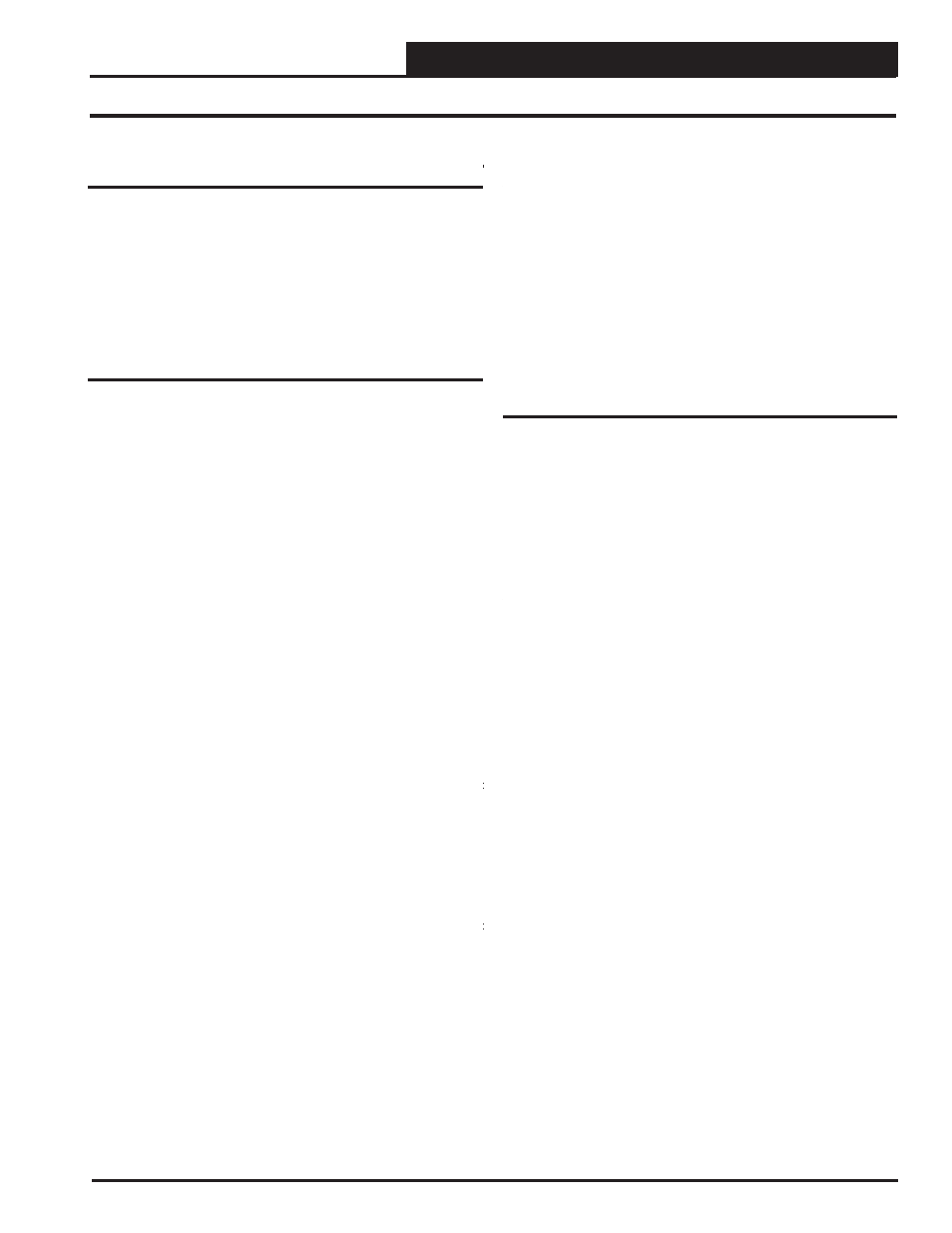Sequence of operations – Orion System VCC-X Controller User Manual
Page 65

VCC-X Controller Technical Guide
SEQUENCE OF OPERATIONS
65
Air to Air Heat Pump Operation
Cooling Mode will operate in the same manner as described in the
Cooling section.
A reversing valve relay output can be confi gured to activate with
the fi rst compressor stage in the Heating Mode or the Cooling Mode
of operation.
In the Heating Mode, Compressor Heat, Auxiliary Heat, and
Emergency Heat can be used to achieve the Active Supply Air
Heating Setpoint. Auxiliary Heat can be either a modulating or
staged form of heat, or it can be a modulating form of heat followed
by staged heat.
When Auxiliary Heat comes on in conjunction with a digital
compressor heat stage, the digital compressor will be locked at
100% until the Supply Air Temperature (SAT) rises above the SAT
Heating Setpoint plus the Heat Staging Window. At that point, the
Auxiliary Heat will stage off (after a stage down delay) and the
digital compressor heat will be allowed to modulate.
When the Outdoor Air Temperature (OAT) is below the Heating
Lockout but above the OAT Compressor Heating Lockout,
Compressor Heat will be used and can be supplemented by Auxiliary
Heat.
When the OAT is below the OAT Compressor Heating Lockout,
Compressor Heat is locked out. Auxiliary Heat will then be the
primary heat and can be supplemented with stage(s) of Emergency
Heat (if available). Emergency heat is only available when the OAT
is below the OAT Compressor Lockout.
There is no Dehumidifi cation during the Heat Mode of a Heat Pump
unit.
NOTE:
Any digital compressor stage in a Heat Pump unit must
be confi gured as a “Digital Compressor”. The VCC-X
will know it will operate as a heat pump compressor
by the unit being confi gured as having a Reversing
Valve. Any fi xed Heat Pump compressor stage must
be confi gured as a “Heat Pump Compressor” rather
than a “Cooling Stage.”
EXV Operation, Head Pressure Control & Temperature Protection
Heat Pump Standard Defrost
Operation
If using the VCC-X Controller with an installed Defrost Coil
Temperature Switch, a Defrost Cycle is available.
If the compressor(s) are operating in the Heating Mode and the
Defrost Coil Temperature Switch closes, the unit will enter the
Defrost Mode, provided the user-adjustable Defrost Interval Timer
has elapsed since the last Defrost Cycle.
In the Defrost Cycle, the reversing valve signal is switched to the
opposite operation, and the compressors are brought to maximum
capacity. Auxiliary Heat will be used to attempt to maintain the
Heating SAT Setpoint.
The unit will leave the Defrost Mode after 10 minutes have elapsed
or the Defrost Coil Temperature Switch opens.
If the unit leaves the compressor heating mode, the Defrost Interval
will restart once the unit re-enters the compressor heating mode.
Heat Pump Adaptive Defrost
Operation
The Adaptive Defrost operation adjusts the time interval (Adaptive
Defrost Timer) in between Defrost Mode cycles.
As stated above, the unit will leave the Defrost Mode after 10 minutes
have elapsed or the Defrost Coil Temperature Switch opens. If the
Defrost Cycle is terminated because the 10 minute timer runs out,
this could be an indicator that the unit may need more defrost time.
To address this issue, the Adaptive Defrost Timer value will be
subtracted from the original Defrost Interval.
If the Defrost Cycle is terminated between the 8
th
and 9
th
minute, the
Defrost Interval will not be changed.
If the Defrost Cycle is terminated before the 8
th
minute, this
could be an indicator that the unit may need less defrost time.
To address this issue, the Adaptive Defrost Timer value will be
inversely proportionally added to the original Defrost Interval as the
termination time moves from 8 minutes to 0 minutes.
Adaptive Defrost can be disabled by setting the Adaptive Defrost
Timer Setpoint to 0.
Electronic Expansion Valve (EXV)
Operation
If EXV’s are being used, a Coil (Suction Line) Temperature Sensor
will measure the Coil (Suction Line) Temperature after each
Evaporator Coil line for each compressor, and this sensor will be
connected to an RSMV Module. This temperature will be used in
conjunction with the calculated saturated refrigerant temperature to
calculate the Superheat of each evaporator coil. The EXV for each
coil will then be controlled to maintain the Superheat Setpoint.
Head Pressure Control
The Refrigeration System Module for VFD Compressors (RSMV)
can monitor a Head Pressure Transducer and control a Condenser
Fan to maintain a Head Pressure Setpoint. The RSMV must be
confi gured for an Air Cooled Condenser.
A Condenser Relay is commanded on when the fi rst compressor is
enabled (except if the unit is in Heat Pump Defrost Mode). On an
Air Cooled Unit, the Condenser Fan will be controlled with 0-10
VDC output signal or a PWM output signal. Both outputs operate
simultaneously.
When the Condenser Signal fi rst activates, it maintains at 100% for
10 seconds.
In the Cooling Mode, the Condenser Signal will modulate to maintain
the Cooling Head Pressure Setpoint. The signal can modulate
between 15% and 100%. If the Head Pressure exceeds 550 PSIG,
the condenser control signal will immediately go to 100% and a
High Head Pressure Alarm will be generated. The alarm will be
deactivated when the Head Pressure drops below 540 PSIG.
In the Dehumidifi cation Mode, the Condenser Output Signal controls
to the Reheat Head Pressure Setpoint. High Head Pressure conditions
produce the same effects as in the Cooling Mode.
If no Head Pressure Sensor is detected, the Condenser the Condenser
Output Signal will be maintained at 100%.
Temperature Protection
Temperature Protection is activated when the Supply Air Temperature
(SAT) rises above the High Cutoff Temperature (immediate) or drops
below the Low Cutoff Temperature (for 10 minutes). Both cutoff
setpoints are user-adjustable. This mode shuts off the unit (with a 3
minute fan off delay) until the mode is cancelled.